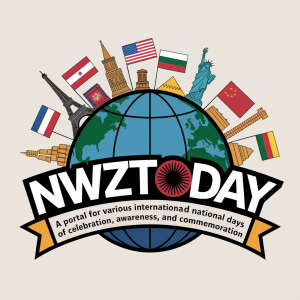Each year on April 12, the world pauses to celebrate the International Day for Human Space Flight, a day dedicated to the awe-inspiring achievements of humanity’s journey into the cosmos. This year, in 2025, we reflect on the legacy of space exploration, the milestones we’ve achieved, and the boundless possibilities that lie ahead.
Why Do We Celebrate This Day?
April 12 was chosen for a significant reason. On this day in 1961, Yuri Gagarin, a Soviet cosmonaut, became the first human to journey into outer space. His spacecraft, Vostok 1, completed an orbit around Earth, marking a monumental moment in human history. The day is not just about celebrating Gagarin’s achievement but also about recognizing the technological advancements, international cooperation, and unyielding human curiosity that have fueled space exploration.
A Brief History of the International Day for Human Space Flight
The United Nations officially declared April 12 as the International Day for Human Space Flight in 2011, marking the 50th anniversary of Yuri Gagarin’s historic spaceflight. The resolution, adopted by the UN General Assembly, acknowledges the crucial role of space science and technology in achieving sustainable development and improving the well-being of humanity.
This day also coincides with “Cosmonautics Day” in Russia and “Yuri’s Night,” a global celebration of space exploration and innovation. From its inception, this day has been a reminder of our shared dreams of exploring the unknown and the collaborative efforts required to reach the stars.
Significance of Human Space Flight
Human space flight represents more than just a technological achievement; it’s a testament to human ingenuity and resilience. It pushes the boundaries of what’s possible and inspires generations to dream bigger. Space exploration has led to numerous scientific discoveries, advancements in technology, and a deeper understanding of our universe and our place within it.
Moreover, human space flight fosters international collaboration. Space agencies from around the world work together to achieve common goals, proving that the pursuit of knowledge transcends political and cultural boundaries.
How Is This Day Observed?
Across the globe, the International Day for Human Space Flight is celebrated with educational events, panel discussions, and exhibitions highlighting humanity’s achievements in space. Schools and universities host lectures and workshops, while science centers and museums offer special programs to engage the public.
“Yuri’s Night” events, often held on the evening of April 12, bring together space enthusiasts for parties, music, and stargazing. These gatherings are a fun way to honor the past while looking forward to the future of space exploration.
Fun Facts About Human Space Flight
- Yuri Gagarin’s first words in space were, “I see Earth! It’s so beautiful.”
- The Vostok 1 mission lasted only 108 minutes from launch to landing.
- NASA’s Apollo program, which landed humans on the Moon, was inspired by the Soviet Union’s early achievements in space.
- The International Space Station (ISS) is a prime example of international collaboration, with contributions from 15 countries.
- Space exploration has led to everyday innovations like GPS, water purification systems, and even memory foam mattresses!
Join the Celebration!
This April 12, take a moment to look up at the night sky and marvel at what humanity has accomplished. Attend a Yuri’s Night event near you, visit a science museum, or simply share the story of Yuri Gagarin with friends and family. Let’s celebrate the spirit of exploration and the incredible potential of human ingenuity!
As we honor this day, let’s also look forward to the future of space exploration, from Mars missions to deep space travel. The stars are calling, and humanity is ready to answer.









